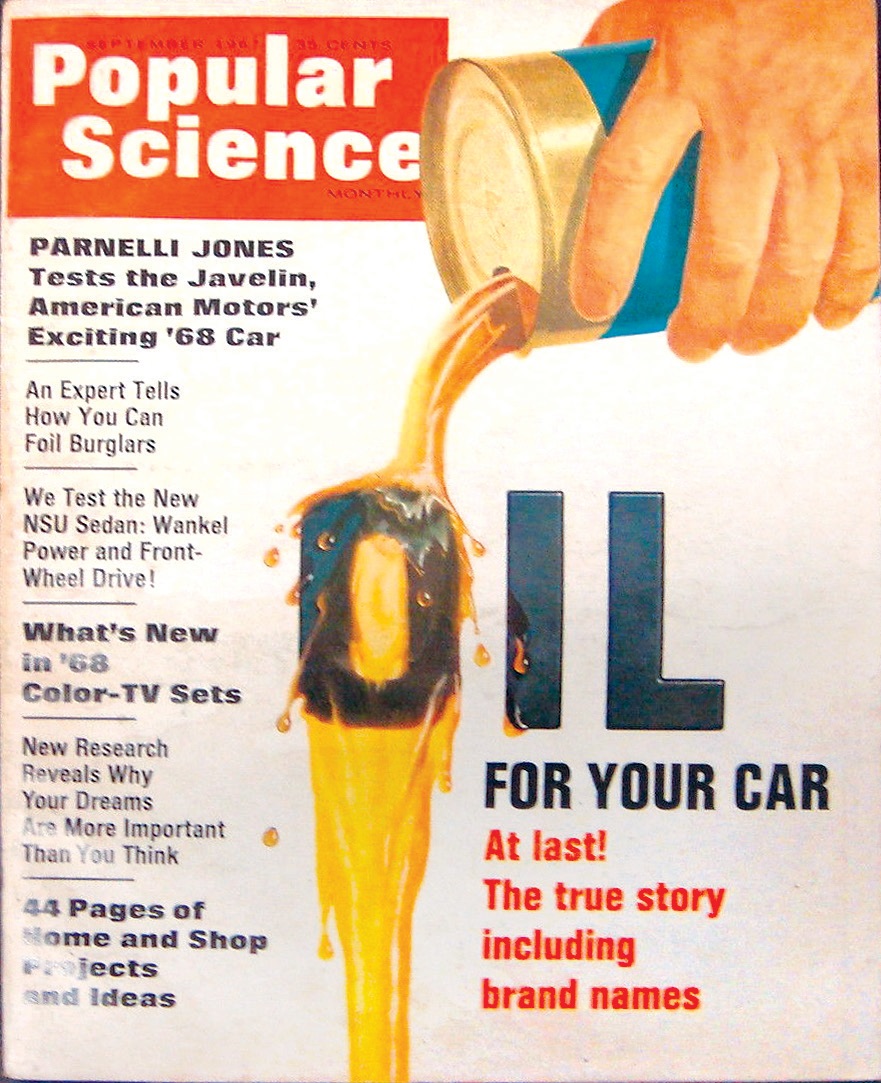Cleaner air, dirtier oil?
Evan Zabawski | TLT From the Editor September 2017
Lower emissions place higher demands on oil.

This magazine article on automobile motor oil led GM to resurrect a device their Cadillac division had designed for the engines it built for the M5 Stuart tank during WWII.
“THEY'LL BE HARDER THAN EVER ON MOTOR OIL” proclaimed an article in the September 1967 issue of Popular Science. The article was in response to a new requirement for all 1968 vehicles, based on an issue that had been unfolding for 15 years and continues to resonate today.
In 1952 Dutch chemist Dr. Arie Jan Haagen-Smit published his paper, Chemistry and Physiology of Los Angeles Smog, based on research he began in 1948. He linked the “decrease in visibility, crop damage, eye irritation and finally rubber cracking” to the photochemical reaction of the 1,000-2,000 tons of hydrocarbons and 200-300 tons of nitrogen oxides, largely from incomplete automotive combustion processes, released locally into the atmosphere each day.
In 1958 General Motors Research Laboratories discovered the source of almost half of these emissions was the road-draft tube, which ventilated any water vapor, exhaust gas blow-by and evaporated oil directly to the atmosphere. This led GM to resurrect a device their Cadillac division had designed for the engines it built for the M5 Stuart tank during WWII—a device designed to overcome insufficient draft and prevent water ingression during deep fording.
Known as Positive Crankcase Ventilation (PCV), its main components are a simple spring-actuated valve, working against the vacuum from the intake manifold, and a breather, which draws in fresh air to flush the gases to the combustion chamber for afterburning. After GM confirmed it was effective at reducing hydrocarbons, they offered the technology to all other U.S. automotive manufacturers, royalty free, through its trade association, the Automotive Manufacturers Association (AMA).
Though legislation did not yet exist, in 1961 AMA members voluntarily agreed to install PCV systems on all cars sold in California. That same year the Department of Public Health mandated PCV systems be installed on all new vehicles sold in California starting in 1963; such was the birth of the first emission-control system.
The Clean Air Act of 1963 became the first federal regulation aimed at controlling air pollution, but it was not until 1965 that legislation existed to
reduce air pollution (72% reduction for hydrocarbons, 56% reduction for carbon monoxide and 100% reduction for crankcase hydrocarbons). This legislation, the Motor Vehicle Air Pollution Control Act, was an amendment to the Clean Air Act that mandated all new vehicles sold in the U.S., beginning with the 1968 model year, be equipped with PCV systems.
The Popular Science article was referring to this looming deadline, which seems almost counterintuitive. A properly functioning PCV system should actually reduce the burden placed on oil by removing corrosive gases and water, but this article focused on factors that may plug the PCV valve. Engine design and drain interval have some influence; however, the major factor is oil quality, predominantly evaluated using Sequence VB testing for deposit formation.
The Sequence VB test called for running oil in a 1957 Lincoln V8 engine for four hours at varying loads and speeds, four times per day, for 12 days, totaling 192 hours. Then it called for checking for coverage and depth of deposits at numerous locations throughout the engine. At the time of writing, Ford was suggesting modifying the test to use a 1967 Ford 289 cu.in. with a PCV system but eventually settled on their 302 cu.in. engine when Sequence VC became official.
Results from this testing established criteria for high-quality oils that would not form sludge, therefore their use prevented fouling the PCV valve and helped push OEM drain interval recommendations to 6,000 miles or six months, whichever came first (time considered to be representative of driving habits, i.e., short trips versus longer trips at higher speeds).
On the eve of what is ostensibly the 50th anniversary of widespread use of PCV systems, we continue to pursue longer drain intervals while meeting lower emission standards.
 Evan Zabawski, CLS, is the senior technical advisor for TestOil in Calgary, Alberta, Canada. You can reach him at ezabawski@testoil.com
Evan Zabawski, CLS, is the senior technical advisor for TestOil in Calgary, Alberta, Canada. You can reach him at ezabawski@testoil.com.